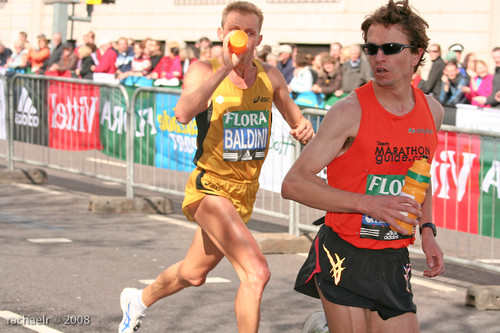By Peter Gilmore for BATC
How do you run a fast marathon? I get asked some form of that question more than any other. The answer, as you might expect, can be a little complicated. Mostly because each runner has different levels of time and energy to devote to their training and racing. There is, however, one common thread that connects the training of the vast majority of successful marathoners. They run a lot of miles. Yep, that’s my great insight. Seems a little obvious right?
I should back up a few steps. If the most common question I get asked is, “How do I run a fast marathon?”, the 2nd, 3rd, 4th, 5th... most common questions have something to do with diet, running form, sleep, footwear, stretching, weights; anything but actual running. American runners seem to have an unending fascination with all these extra-curricular activities, yet we continue to get slower at running marathons. It reminds me of the weekend cyclist who spends $5,000 for a new bike that weighs 3 ounces less, but he’s still got the pot belly under that colorful jersey.
So what’s my point? If you want to improve your performance in the marathon, stop worrying about minimalist shoes, caveman diets, and new-age running form, and start worrying about getting out the door and running a little more than you did last week. High mileage works! It is the single best method for the greatest percentage of runners to improve in the marathon. Think of the entire population of marathon runners on one enormous bell curve. Those who need high mileage to reach their peak performance in the marathon make up the entire “bell” of the curve. Play the odds on this bet. You are probably one of those who could improve by simply running a little more, then a little more, then a little more. There are always outliers who have had unbelievable success without running big miles. Steve Jones set a world record, and broke some of the toughest men the sport has ever seen, on less than 100 miles a week. But, he was the exception, not the rule.
The two most successful clubs ever at developing American marathon runners are the Greater Boston Track Club (GBTC) of the late 70s/early 80s, and Hansons-Brooks circa now. They each have done what has eluded so many better funded clubs. Take average post-collegiate runners and make them sub 2:16 marathoners. They’ve each produced superstars who ran much faster, but I’m concerned with getting lots of overlooked guys to outperform at the marathon distance. This trick was performed by doing unimpressive speed workouts on the back of consistent high mileage. Repeat for 2-3 years and you’ve got some fast times.
“But isn’t that just a bunch of junk miles?”, you ask. If running an extra 5 miles on your easy day is what you define as junk miles then, yes, it is a bunch of junk miles. Junk miles got Bill Rodgers to 2:09. They got Brian Sell to 2:10. They got me to 2:12. Meanwhile, no junk miles (quality over quantity) got us the dark ages of the ‘90s in American marathon running.
“Won’t I get injured with all that running?”, is another common worry. Sure you might get injured. But you might also get much faster. My high school physics teacher, Mr. Layton, repeatedly told our class, “You’re getting old before you’re getting smart.” In this case, “you’re getting old before you’re getting fast.”
There is one fantastic short cut that makes running high mileage much easier. It brings together the fear of junk miles and the fear of injuries. When you’re running all these miles, slow down. Take it easy and enjoy. You’ll get almost all the aerobic benefits of the faster pace you used to run, but dramatically lower your chance of injury. You still have to do your speed workouts, and the occasional fast long run, but on the recovery days you can slow down, go further, and get faster. Let me give you a concrete example. When I was training for my best marathon I would do most of my recovery runs at 7:00 per mile. My marathon pace was about 5:03 per mile. Going 2 minutes per mile slower had a couple of big benefits. First, it helped me recover from the speed work days. Second, it was easier to get in more miles on those recovery runs, which helped build a huge aerobic engine.
Now get out the door and run!





 ShareThis
ShareThis